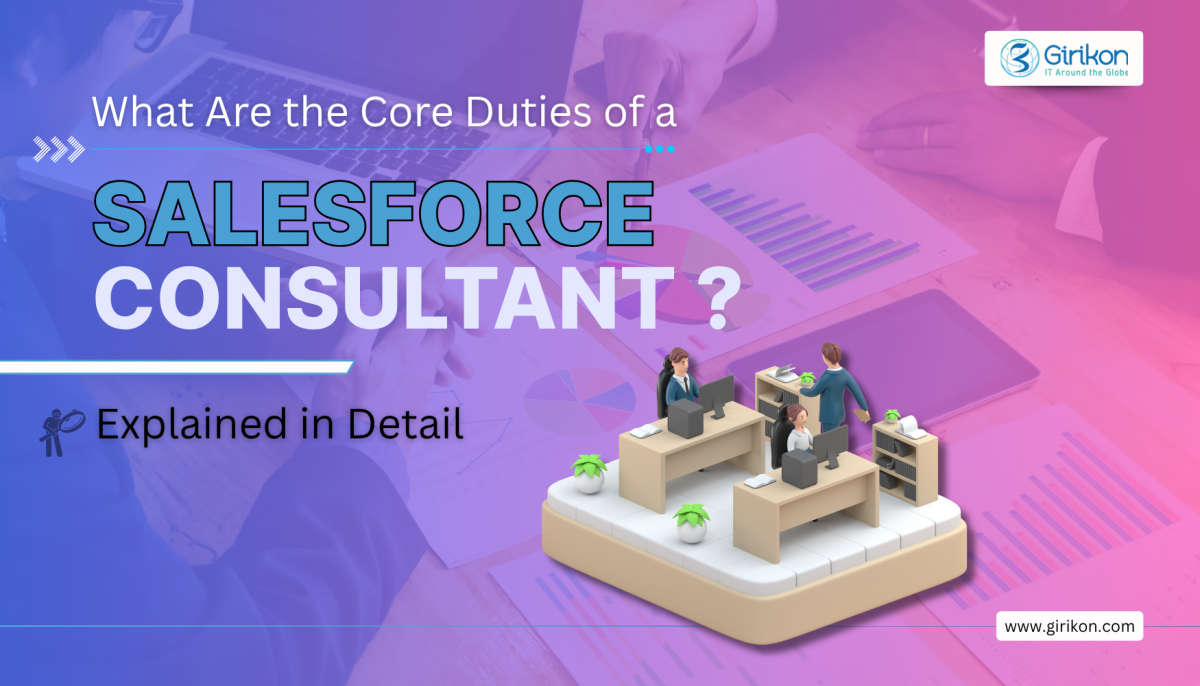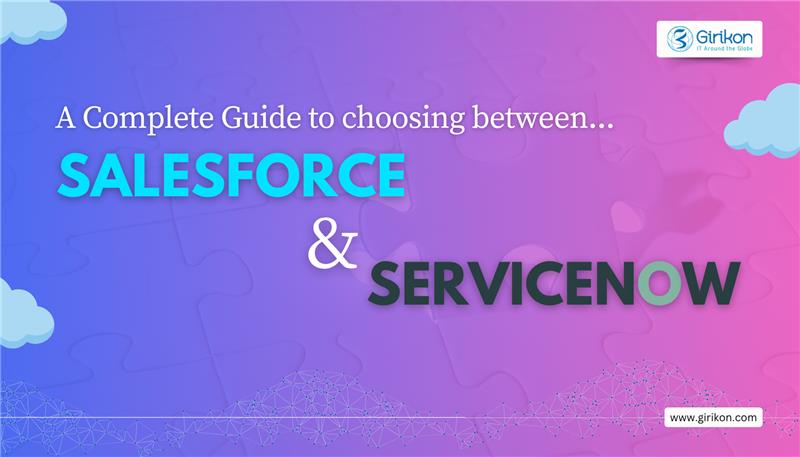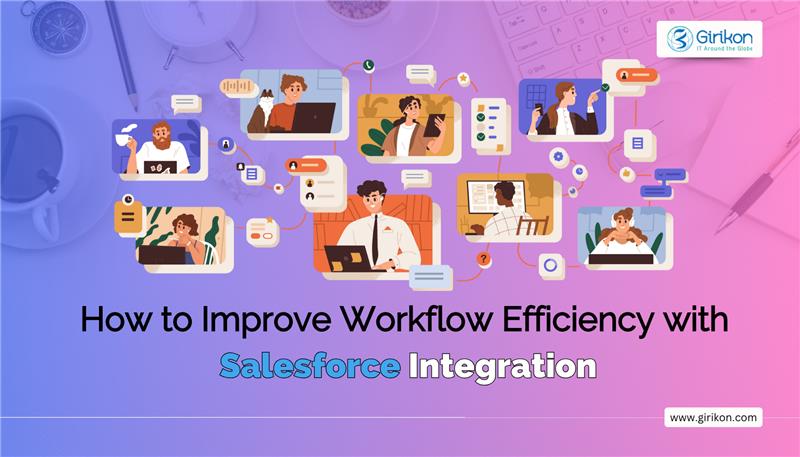Some Salesforce Consultants are successful in building a stable client base that they nurture and grow over time while others find it a rocky road and eventually hit a wall. Have you ever wondered what the difference is? Client relationships. Strong client relationships are the foundation for a successful Salesforce Consulting practice. Loyal customers are not only a joy to work with, but they also stay longer with you and are happy to refer new clients.
How to build lasting client relationships?
Below we have compiled a list of actionable ways to nurture and grow client relationships that will not only improve client satisfaction but also grow your business.
Pay attention to detail and gather all information
The foundation of a strong consultant-client relationship is laid before the client even signs up. Good consultants are aware they need as much information as possible about the prospect to come up with a proposal that stands out from the competition. And the key component of that proposal is how it aligns with the business’s goals and values and the personalities of the people you’ll be working with.
This means collecting “objective” information like:
Their products and services.
The end-users and their profile.
Top 3-4 competitors.
Prioritized goals and associated challenges.
Strategies that have not yielded desired results in the past.
Tools, apps, and systems currently being used.
Budget – long term and short term.
Expectations from a new consultant
It also includes “subjective” information such as:
What is their definition of success?
Future business plans such as new products or services.
Mission and values they stand for.
What is unique about them and how are they different from their competitors?
Skills, experience, interests, and preferences of the team you’ll be working with.
What are their pain points and wants from a new consultant?
Absorb the information
The intel you collected will be utilized not only in your bid document but will also be leveraged throughout the entire project execution lifecycle. Take the time to absorb and understand every point in depth so that it is made evident in everything you do.
Go above and beyond with your proposal
From the point of view of a project, your bid illustrates how you will go about achieving your client’s goals. From the point of view of a relationship, it’s an opportunity for you to demonstrate that you have a deep understanding of your client’s business and its people.
To be successful, you need to seamlessly link what and why.
What refers to activities included as a part of the project and why should link one of the "whats" to one of the business goals? Once you identify the why, establish the expected measurable outcome once the why is addressed. Include in your proposal how you will measure this outcome.
This approach demonstrates your commitment to the client’s business and its people and shows that you care about the people impacted by your proposed offering.
Have an onboarding process
Once the client has signed up with you, there are bound to be regular interactions across the user group. A smooth onboarding process sets the benchmark for free and open communication and ensures smooth execution which is necessary for a long-term client relationship. Start with a kick-off meeting to ensure everyone is on the same page and well-versed with the goals and expectations of the project.
Treat clients as partners
Treating your clients as partners in success lays the foundation for a purposeful and fruitful engagement, where both your and your client’s points of view are respected, and each does their best to ensure success. At the end of the day, it’s a transactional relationship and a well-defined partnership ensures that each party delivers its end of the bargain.
Be proactive
Share fresh ideas and propose new strategies.
Inform the concerned teams in advance about any disruptions that may be caused due to system changes or changes in requirements.
Educate the teams and empower them to be proactive.
A proactive approach based on transparent communication lays the foundation for a seamless execution and ensures success for all concerned.
Be a good listener
Clients can at times get reactive about results. While you may be doing a great job with your project, the results are not going through the roof. Instead of stone-walling the client’s perspective, use a more empathetic approach such as:
“I see what you’re talking about. It’s a valid point. “
“We’re glad you brought this up. Let us review this and allow us a week to report back to you.”
Position yourself as a partner in the journey. Value everyone's point of view, evaluate objectively, and present your findings to build a long, trusting relationship.
Establish a framework for communication
Conduct scheduled meetings with relevant stakeholders and end them with clearly defined action items
Set up weekly or fortnightly meetings to review progress and answer questions. Make the meetings more about listening than talking. This illustrates your intent to be accountable and helps build trust with the client. Leverage text messaging to build rapport and personal connections with team members and foster a more informal way of working.
Share your concerns early
This is particularly relevant when the business landscape is changing rapidly. Avoid saying yes to everything they want. Clients may have big plans and as a consultant, it's your job to double-check on everything they want for its viability, its efficacy, and impact on the overall project. Understand the challenges – both short-term and long-term, and communicate your concerns clearly.
Establish quarterly business reviews
Quarterly reviews with the senior leadership are a great way to build on relationships. Make these reviews focussed on high-level strategy, allowing the client to reflect on long-term goals. Review past strategies, what's worked and what hasn't, and pivot if need be.
Quarterly reviews are also the apt time for a client to provide insight into the changing business landscape, and the shift in goals (if any), and to establish how these changes impact the scope and budget of the ongoing project.
Strong client relationships are the backbone of a successful Salesforce Consulting practice. It lays the foundation for increased loyalty and referrals and makes the journey a joyful one.
Businesses today are generating mountains of data and forward-looking business leaders recognize that there are critical insights hidden inside their data. With AI, businesses can unlock these insights to identify trends, opportunities, and challenges. Building a strong enterprise-wide data culture along with robust and trusted AI holds the key to unlocking these hidden insights.
While business leaders recognize the value of data for decision-making, a recent global survey conducted by Salesforce amongst 10,000 of them reveals some interesting facts.
67% of them are not using data for making critical decisions like product or service pricing
Less than 33% use data to drive strategies for new markets
79% don’t leverage data for diversity and inclusion
While the above numbers revealed something unexpected, here is what the survey summarized.
Companies that make data-driven decisions are more likely to beat sales targets than those that don't
Companies that combine AI with their data showed an average increase of 30% in revenue
Companies that embrace this approach are able to reassign human and financial capital quickly and can create personalized customer experiences much faster
What can you do now?
Here are some suggestions for creating a strong data culture. We will take these items up later in this article.
Put together the right team
Provide them with the right tools and training
Test your theories on a pilot scale and iterate
Prioritize the human aspect of your data culture
Identify areas where AI can derive more value from your data
Data-driven V/s data-informed
In a data-driven company, most of the organization’s employees can access and analyze data, draw inferences about what it means, create a dashboard, visualize data, and use all of these to determine the next steps. Employees in a data-driven organization don't depend on data analysts to do this.
Being data-informed enables organizations to make decisions based on a mix of data, research, experience, and insights. Data-informed organizations may or may not have the skills that data-driven organizations have.
Why is it critical to build a strong data culture
Business leaders have to deal with countless challenges before embarking on building a data culture. Avoid over-analysis by starting with a single use case that validates the value of your new data culture approach. McKinsey research has shown that data-driven organizations achieve their goals faster and their data culture initiatives contribute at least 20% to earnings.
Here’s why this works:
Data analysis identifies actionable trends
Data analysis identifies patterns that unlock value and enable organizations to utilize opportunities faster. Adding AI to the mix can accelerate the process by doing a deeper dive into data analysis at scale and serving up recommendations. Combining data and AI drives growth, promotes innovation, fosters collaboration, and creates uniqueness.
AI and machine learning increase success by 30%
Organizations that still rely on legacy knowledge and instinct to guide decision-making are missing out on opportunities. With AI and machine learning, organizations can make quick and accurate decisions. According to Salesforce research, adding AI to organizational data and business functions eliminates the guesswork from the decision-making process and increases success by an average of 30% across important metrics like operational efficiency, employee productivity, and topline growth.
Strategic work keeps employees engaged
When decision-making is guided by data analysis, employees spend less time on mundane tasks that add little or no value and can focus on strategic or creative tasks. This keeps them engaged and improves their productivity. Salesforce research shows that 84% of organizations that have adopted a data culture observed higher employee retention.
Empower the right team
The best way to create a team of data champions is by showing not telling. Illustrate with real numbers how data-driven decision-making increases revenue and customer satisfaction and streamlines operations. Instead of choosing any random use case to illustrate your point, capture their attention by selecting a project that scores a financial win and one that you can scale for greater impact.
Here’s how you can start:
Step 1: Put together the right team
Create a working group of employees from across the organization with diverse backgrounds and functions. These team members should have a collaborative mindset, unique skills and abilities, and individual organizational perspectives. Ensure that you include employees across the corporate strata such as senior executives, managers, engineers, consultants, and machine learning scientists.
Step 2: Provide them with the right tools and training
Salesforce research stats on data literacy don’t paint a pretty picture. Only 35% of the surveyed workforce has received training on data visualization tools and 29% on statistical tools. 27% percent workers say they can interpret data outputs relevant to their job function, and only 26% say they can use that data to make decisions. With proper access to training on technology-driven data analytics, organizations can empower their entire workforce to unlock the power of data to drive decision-making.
Step 3: Test your theories on a small scale and iterate
Start small, analyze results, refine your theories and iterate. Eventually, a winner will reveal itself when your employees can measure the impact of your project on their bottom line.
Step 4: Prioritize the human aspect of your data culture
Encourage involvement of all team members in the entire process from setup, testing, fine tuning, to data analytics and its application for decision making. This will ensure that you avoid bias and guesswork which can have a negative long-term impact.
Take data at face value to avoid bias by proxy. Let’s consider ZIP codes as an example. At face value, they are just a location indicator. But sometimes ZIP codes can be a proxy for an area’s racial makeup and financial services companies consider ZIP codes in loan applications. Decisions based on this data point must be free of bias.
Step 5: Identify areas where AI can derive more value from your data
You can start your AI journey at many places, in any department, for any function, or extend it further if you’ve already started. Start small, demonstrate results, and bring everyone on board. Establish guidelines and standards for consistency, security, accountability, and ethics from day one. Ensure completeness and accuracy of your data to make the best use of AI.
Incorporating an AI-driven data culture can be a daunting task. It takes time and effort to bring people on board, retain their interest, and demonstrate results. For most business leaders, this transformation may be a whole new experience. This is where working with a Salesforce Consulting Partner could prove to be very useful. At Girikon, our certified consultants can guide you on this transformational journey of embracing AI with a strong data culture.
Contact us today. Take the next step to build your AI-powered data culture.
One of the primary drivers of research in Artificial Intelligence (AI) has been to create AI systems that can build viable and powerful computer programs to tackle complex business challenges. Recent developments in this area especially the rapid strides made by Large Language Models (LLMs), have brought about this radical shift in thinking. LLMs were originally developed for comprehending natural language but now they have taken machine intelligence to another level. LLMs can now create code and text, setting a new bar for AI development.
Until now, LLMs have been reasonably proficient in handling routine programming tasks. However, they often falter when confronted with complex programming challenges. One of the major stumbling blocks in their use for solving programming problems has been their tendency to generate code blocks as monolithic entities instead of breaking them down into granular, logic-based code blocks with specific functionality.
Human developers on the other hand are easily able to create modular code when dealing with complex problems. They tap into their knowledge base of pre-existing modules to accelerate the development of solutions to new problems.
Salesforce Research recently introduced CodeChain, a cutting-edge AI framework to bridge this gap. CodeChain leverages a series of self-revisions driven by sub-modules created in earlier iterations to streamline the process of creating modular code. At the core of CodeChain lies the methodology of enabling LLMs to approach problem-solving to create logical subtasks and reusable sub-modules.
There are two iterative phases in the sequence of self-revisions in CodeChain.
Sub-Module Extraction and Clustering: In this phase, sub-modules are identified by analyzing the code generated by the LLM. Next, these sub-modules are organized into clusters. From each cluster, representative sub-modules are selected which are identified to be more widely applicable and reusable.
Prompt Enhancement and Re-Generation: The initial chain-of-thought prompt is further improved and regenerated by integrating the selected representative modules from the previous phase. Next, the LLM is asked to produce new modular code solutions once again. This way, the LLM can leverage the information and understanding from earlier iterations to enhance them further.
CodeChain has already been shown to have a significant impact on code generation. Salesforce has indicated that by asking the LLM to enhance and reuse pre-existing sub-modules, the modularity and accuracy of generated solutions are greatly improved.
Comprehensive studies have been conducted to investigate deeper into the factors that contribute to CodeChain’s success. These investigations look at aspects like prompting technique, LLM model size, and code quality. The insights from these studies reveal why CodeChain excels in improving the quality and modularity of code generated by LLMs, making it a potential game-changer for AI-powered code generation.
CodeChain leverages chain-of-thought prompting to generate modular blocks of code which drives natural selection of the LLM to select parts of the generated solution for reuse and refinement.
CodeChain’s release by Salesforce AI marks a key milestone in AI-powered code generation. Its ability to boost modularity and accuracy, along with significant improvements in pass rates indicates a giant leap forward. This disruptive framework is poised to transform the programming landscape, empowering businesses to quickly build and deploy effective solutions.
Introducing CodeGen: Turning Prompts Into Code
The Salesforce Research team recently announced the launch of CodeGen – a new LLM that leverages conversational AI to generate accurate and modular code.
With CodeGen from Salesforce, both programmers and business users can use natural language prompts to define what they want the code to do such as build an app that throws up the last customer interaction. The LLM translates those prompts into code, effectively creating an app using just written instructions.
With CodeGen’s conversational AI capabilities, business and technology teams can eliminate the time and resource-intensive process of building apps from scratch. CodeGen empowers programmers to build apps quickly without much coding, freeing up more time for complex tasks that necessitate a human touch.
The CodeGen Solution
In simple terms – with CodeGen, all you need to do is describe what you want your code to do in natural language and the machine will write executable code for you. This is the next generational promise of conversational AI programming from CodeGen. It makes coding as easy as talking.
Here’s an example to illustrate the power of CodeGen.
When you want to eat a certain dish for dinner, you need to know all the ingredients required to make the dish want and then you have to cook it yourself. You need to know the serving size, the proportion of each ingredient, and the steps to follow.
Now, let’s say you go to a restaurant powered by CodeGen.
You just tell the server what dish you want, and they prepare it and serve it to you. Just describe the dish you want in a short sentence, and it will be served to you without any involvement from you in its creation. You don’t need to specify any ingredients or explain the steps involved in cooking it or provide any other associated instructions. You don’t even need any knowledge of any culinary terms either.
The restaurant kitchen behaves like an intelligent entity, converting your plain sentence into a sequence of steps that takes all the ingredients, in the most appropriate proportion and creates the outcome (in your case the dish you asked for).
Now imagine, instead of a meal you are “ordering” an app that can perform certain functions. That’s the basic idea behind CodeGen.
Salesforce’s implementation of conversational AI programming highlights its commitment to an inclusive approach to software programming to bring it to the masses. AI translates natural language descriptions into fully functional and executable code empowering anyone to build apps even if one has no prior knowledge of programming. According to Salesforce, CodeGen, their LLM which powers conversational AI programming will soon be available as open source to accelerate research.
The launch of CodeChain from Salesforce AI is a landmark event for innovators around the globe. With its ability to improve code modularity and accuracy, it can empower IT teams to dramatically accelerate problem-solving. This disruptive framework is poised to transform the way we approach and solve business problems. To learn more about AI-powered code generation, contact Girikon, a Gold Salesforce Consulting Partner today.

 +1-480-382-1320
+1-480-382-1320 +44-7428758945
+44-7428758945 +61-1300-332-888
+61-1300-332-888 +91 9811400594
+91 9811400594


















